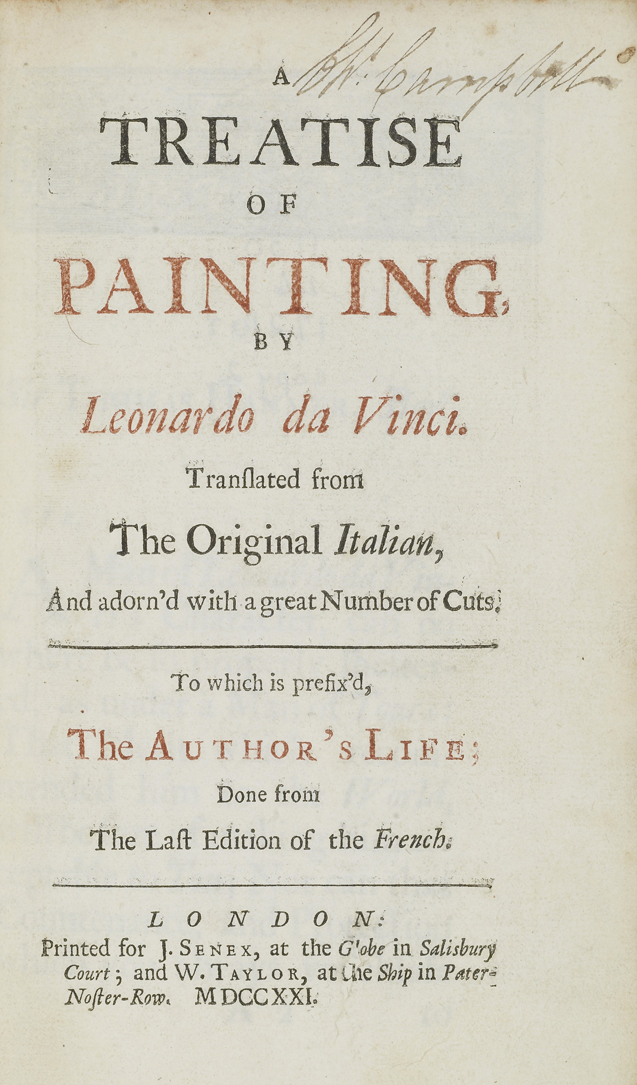
A Treatise on Painting, by Leonardo da Vinci
1721
Senex and Taylor, London
Chapter Display  |
|
Of simple Colours, the first in order is White: this, and Black, we know are excluded by the Philosopher out of the number of Colours, the one being the cause of Colour, and the other its privation; however, inasmuch as they are indispensibly necessary for a Painter, we shall not scruple to admit them among the rest, yielding the first place among simple Colours to White, Yellow has the second, Green the third, Azure the fourth, Red the fifth, and Black the sixth: White we shall lay down for Light, without which no Colour can be seen; we must have Yellow to represent the Earth, Green for Water, Azure for Air, Red for Fire, and Black for Darkness. As to compound Colours, if you desire to arrive at a speedy knowledge of them in all their variety, do but take some Pieces of Painted Glass, and through these Survey all the several Colours which present themselves to the Eye, in a Country Scene; thus will you find the Colour of every Object which you view, mingled and adulterated with that of the Glass, and may easily perceive which undergoes a change more or less to its advantage; which receives additional beauties, and which are stripp'd of their original charms; for instance, if your Glass be Painted with Yellow, you will find Azure, Black and White considerable sufferers by the mixture, and at the same time, Yellow and Green will be beautified, and made more perfect. Other Glasses will have their influences on other Colours, all which you must carefully observe and consider; still chusing out, for your own Use, such whose Composition appears the newest, and most agreeable. When you have thus carried your Observations through the whole variety of Colours, and have viewed them all through a Glass of each kind, proceed to combine Glasses of different Colours; using first two, then three, after four, and even five, or six, if you find Occasion for so many; still observing the Rules already laid down for the simple ones.